Practical Ideas to Support Concept Development
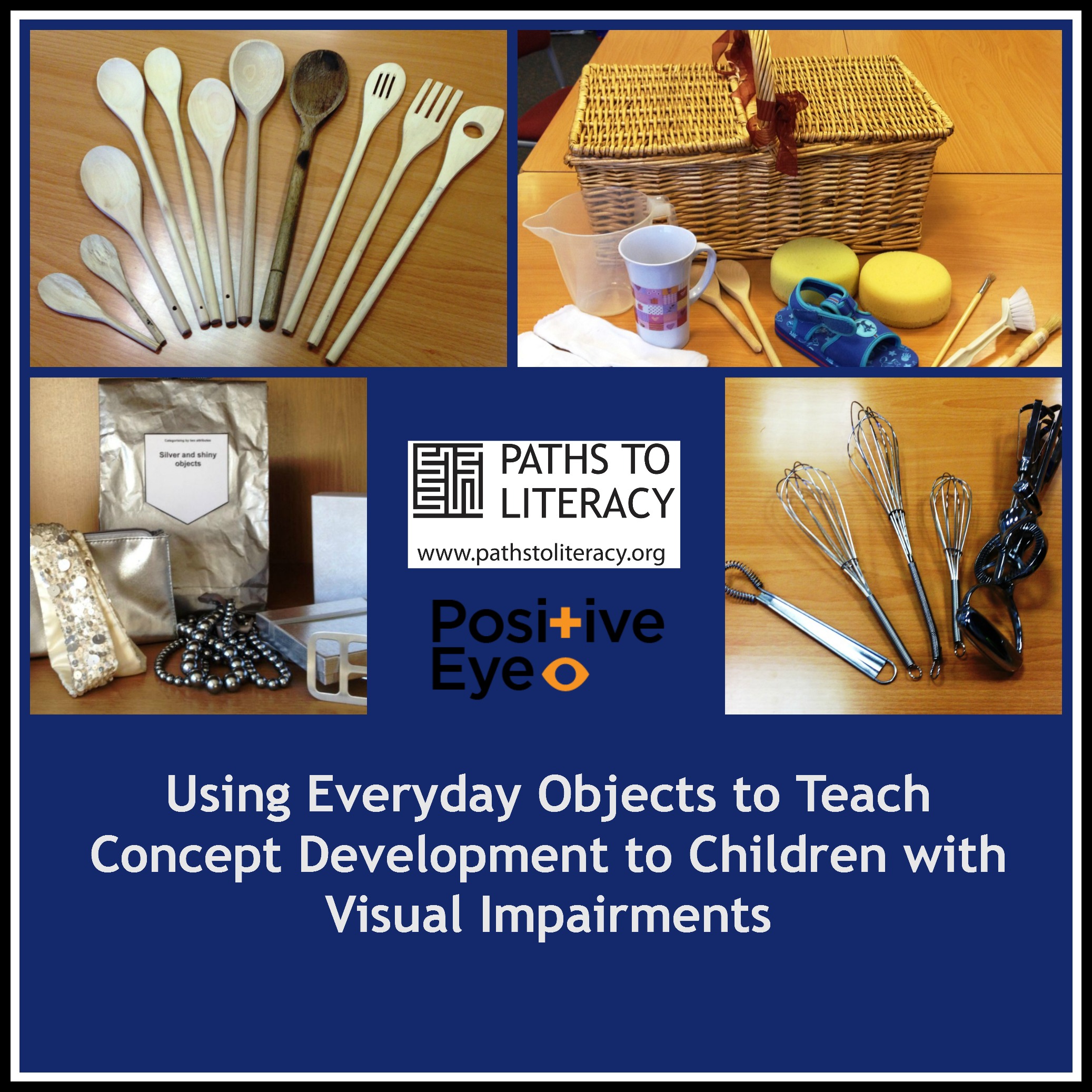
I would like to share some ideas that I demonstrate at Positive Eye's early numeracy courses around concept development, plus some top tips to go along with the ideas.
You can download a pdf of these tips here.
Provide real objects, concrete experience of places, activities, processes
- To explore and find out not just what things are, but also what they do
- To explore what the objects, processes, activities feel like using fingers, hands, feet, toes
- To explore the texture, shape, colour, weight, flexibility and malleability of different objects
- To use manipulative skills to push and poke, squeeze and squash, pull and twist the different objects to see what can be done with them
- To find out which parts of an object move and which stay still, whether objects will roll or bounce
- To find out whether things will stack on top of one another
- To find out which things will fit inside other things and how objects can be moved from place to place
- To manipulate things to understand how they move, drop them to see what they sound like and bang them on a hard surface to see if they change shape
- To smell, to taste, to listen to find out what noise the object, process makes
Remember...
- Always give child the real object to explore tactilely and provide clear description to support further understanding
- The child is only able to access that which is under their finger pads at that moment
- Child has to mentally link all the parts of the object, graphic or page content together
- They don’t have the full view of the object/process in one glance as is the case when accessing by visual methods
- Understanding the world via tactile methods requires high levels of concentration and the child may become very fatigued and will need to take rest breaks
Some fun ideas for concept development
1. Basket of everyday objects
Filled with cup, jug, socks, shoes, brushes, keys, balls, facecloth, padlock, sponges (any household object)
To develop skills: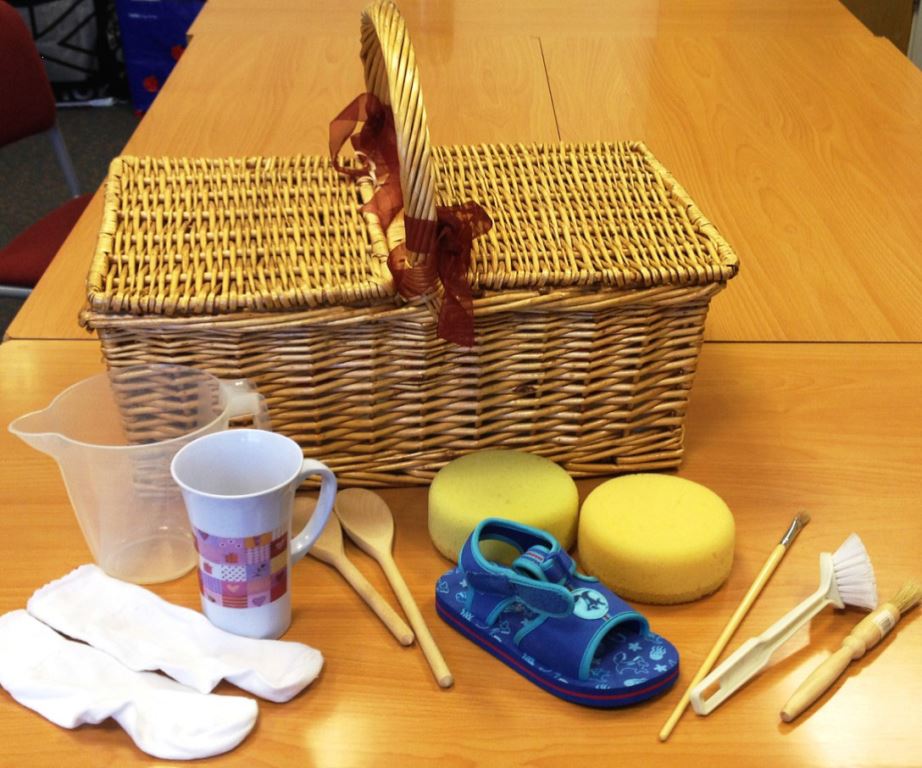
- Counting
- Matching and sorting
- Categorising
- Discriminating
Match the textures, make sounds. Rattle the spoon in the cup, find other objects that make a sound, fill the cup and the jug with water find out which holds the most, squeeze water from the sponges. Match the socks, categorise the brushes, find all the circular, square shapes, longest, shortest objects.
2. Understanding the qualities of objects
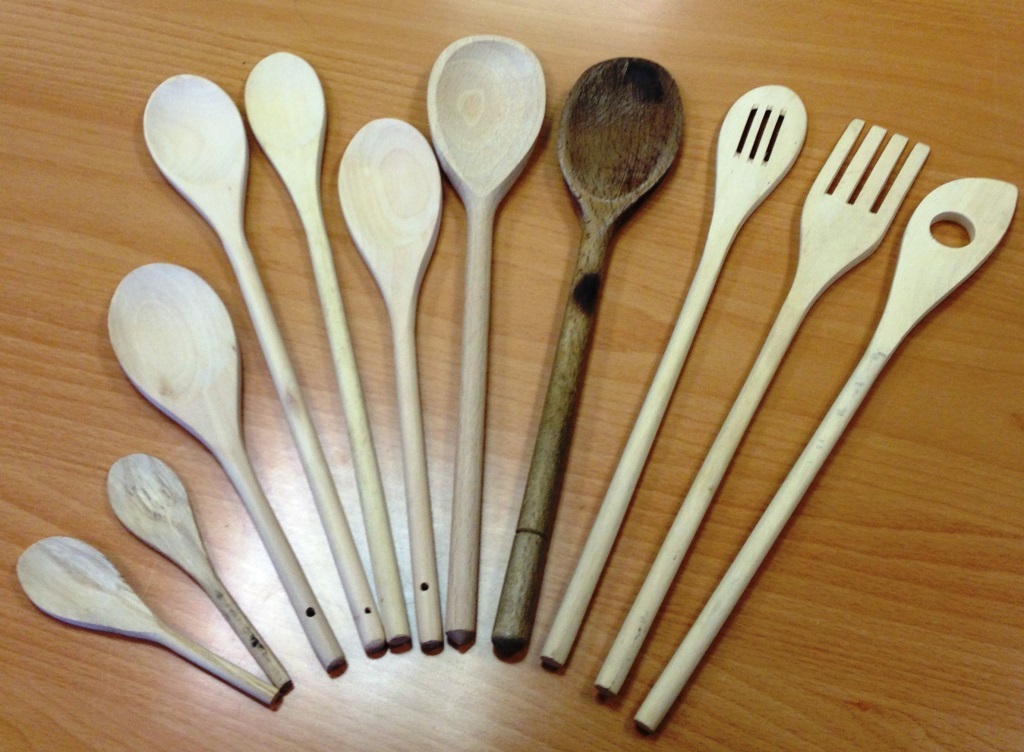
Experience and maximise the learning opportunities:
- Shortest—longest
- Handles of wooden spoon, different top (fork)
- Categorise by spoon head
- Thinnest—widest
- Measure using the spoon as a unit of measurement.
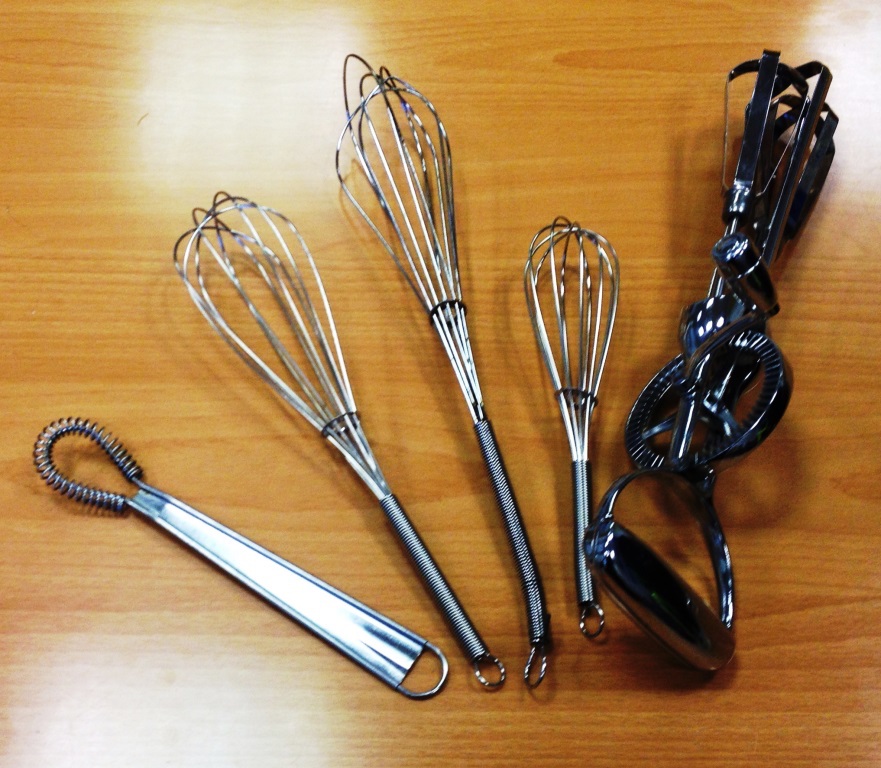
- Explore the qualities of the different whisks
- Whisk bubbles in a bowl
- Make cupcakes using whisk
- Make a mobile with whisks
- Add plastic whisk to the collection
- Explore electric hand whisk (not plugged in)
- Listen to the sound each whisk makes when it is used.
- Find out which is the heaviest—lightest whisk
3. Concept Hanger (B for Bracelet)
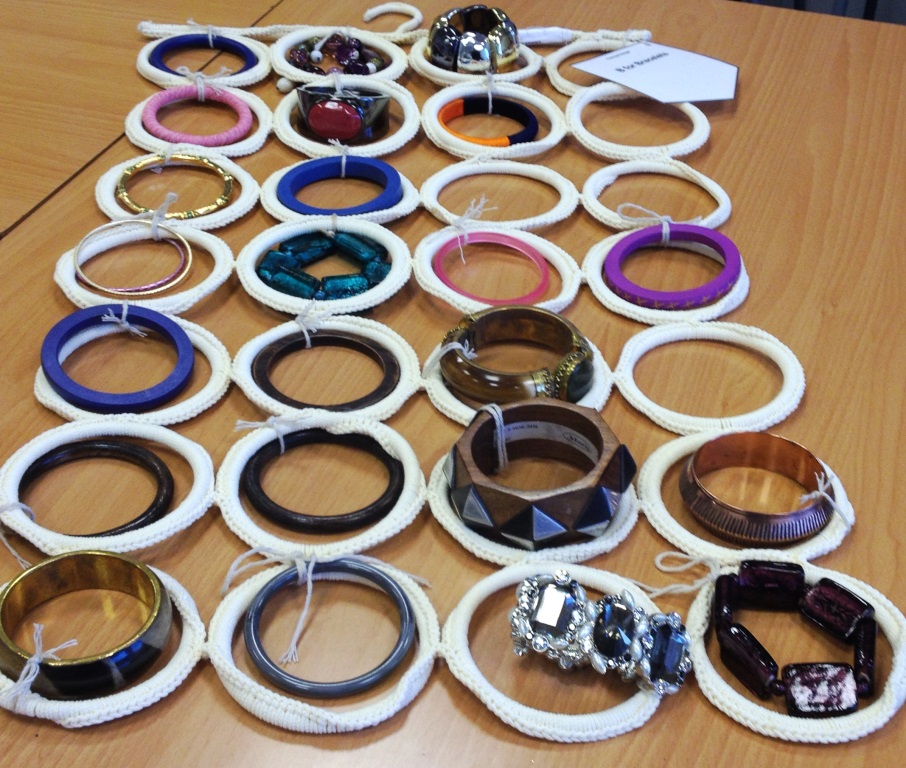
- Hang Bracelets, metal objects, wooden objects, square/circular/rough/smooth/cold to touch objects.
- Change the objects each week, collect the objects with the child.
- Categorise the objects
- Sort by shape, size, length, texture, height
4. Concept bags
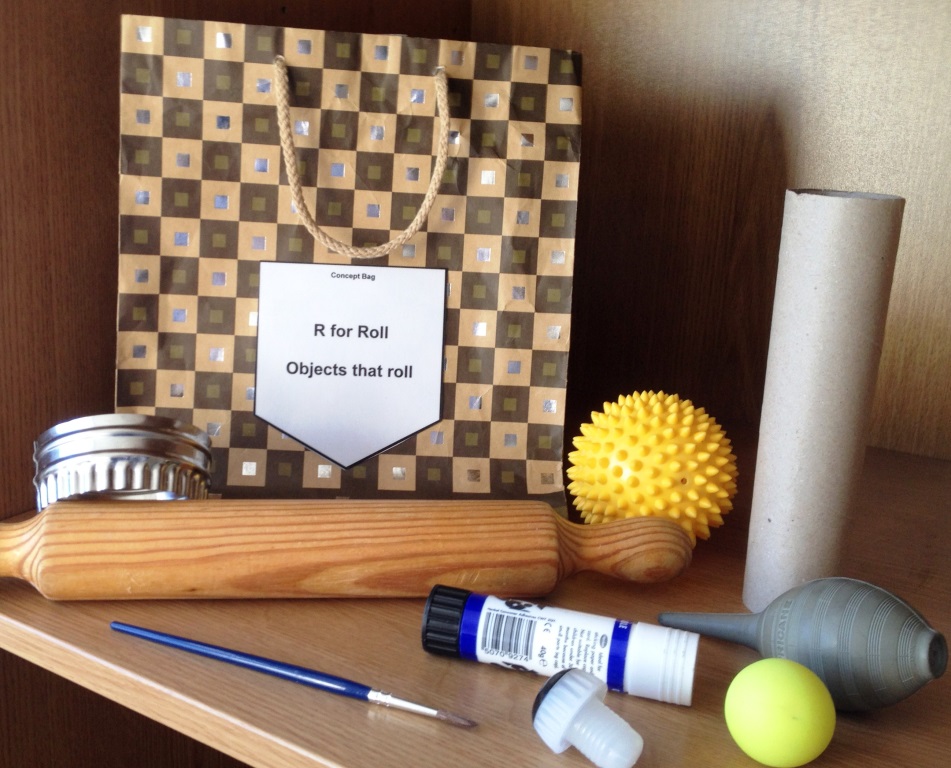
R for Rolling (Objects that roll)
Rolling pin, pastry cutter, paintbrush, glue, cork, small ball, large ball, lens cleaner, inner tube from kitchen roll.
Find out how far each will roll, line them up in order. Is it the lightest that rolls the furthest or the heaviest? Do the objects roll further on a slippy surface or a carpet?
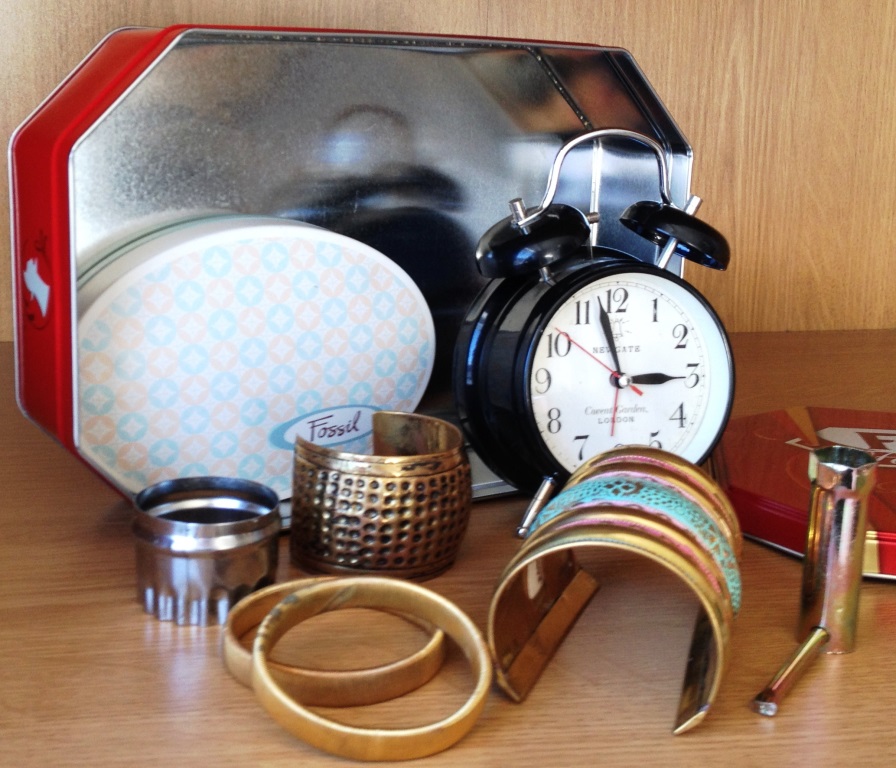
In a metal tin:
- Oval metal tin
- Bracelets
- Shirt cufflets
- Clock
- Bolt
- Pastry cutter
Sort metal from wood in a sorting tray, sort metal by texture, shape, purpose, weight
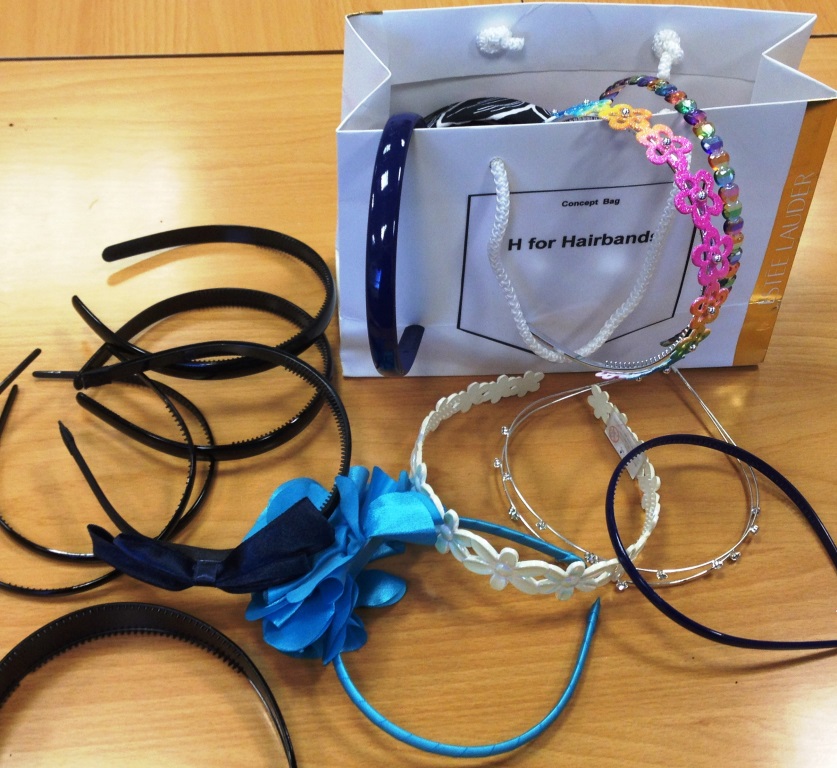
Concept Bags—"H" For Hairbands
Range of hair bands and hair accessories to classify by shape, texture, purpose, make patterns and shapes with the hairbands.
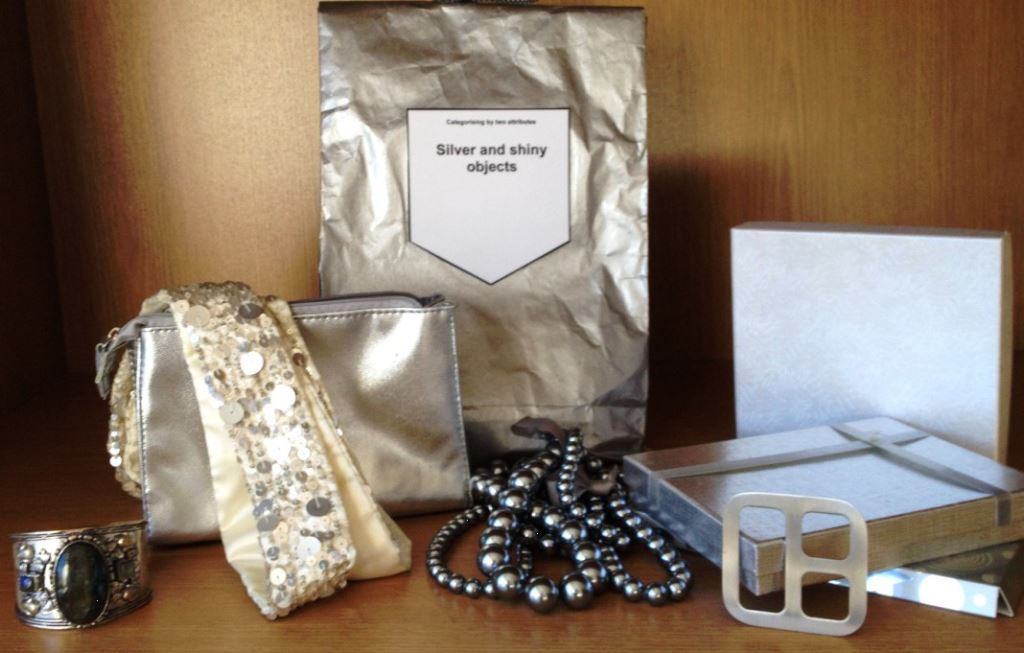
Concept bags/Classification—silver and shiny bag (two attributes)
- Beads, belt with sequins
- make up bag, buckle
- boxes, bracelet
5. Understanding numerousness
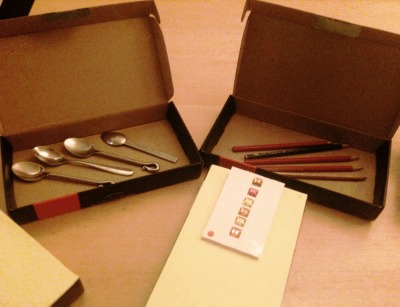
The oneness of one, the ‘twoness’ of two, the ‘threeness’ of three.
Make boxes with different objects in, e.g one car, two fans, 3 bottles, etc
Use a detachable number line to add to the front cover of each box. Line the boxes up to make a numberline.
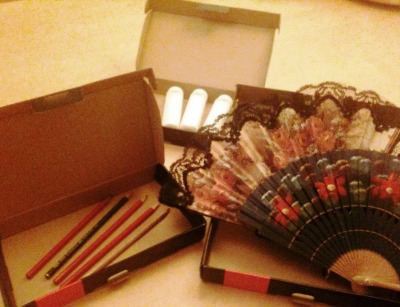
The box contents can be used to understand the oneness of one, the ‘twoness’ of two, as well as to understand the ‘pencilness’ of the pencil, or the 'bottleness of the bottle" Children can add their own objects, collect them from around the environment, sort them in their sorting tray, match the correct number with the correct box.
Positive Eye offers further ideas at https://www.positiveeye.co.uk/

Comments
Love it!
Great ideas!
Thanks to Brenda L and Liams Mom